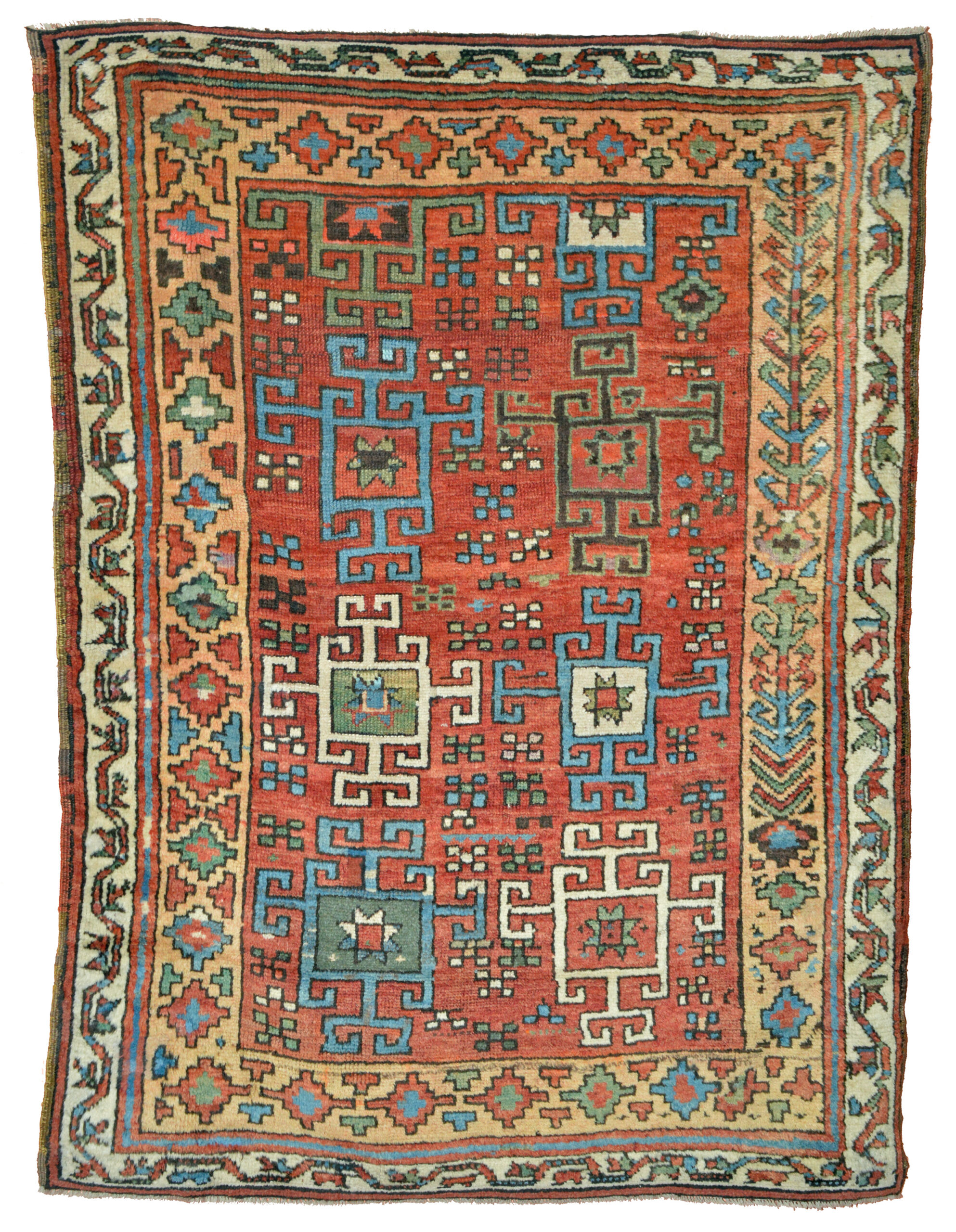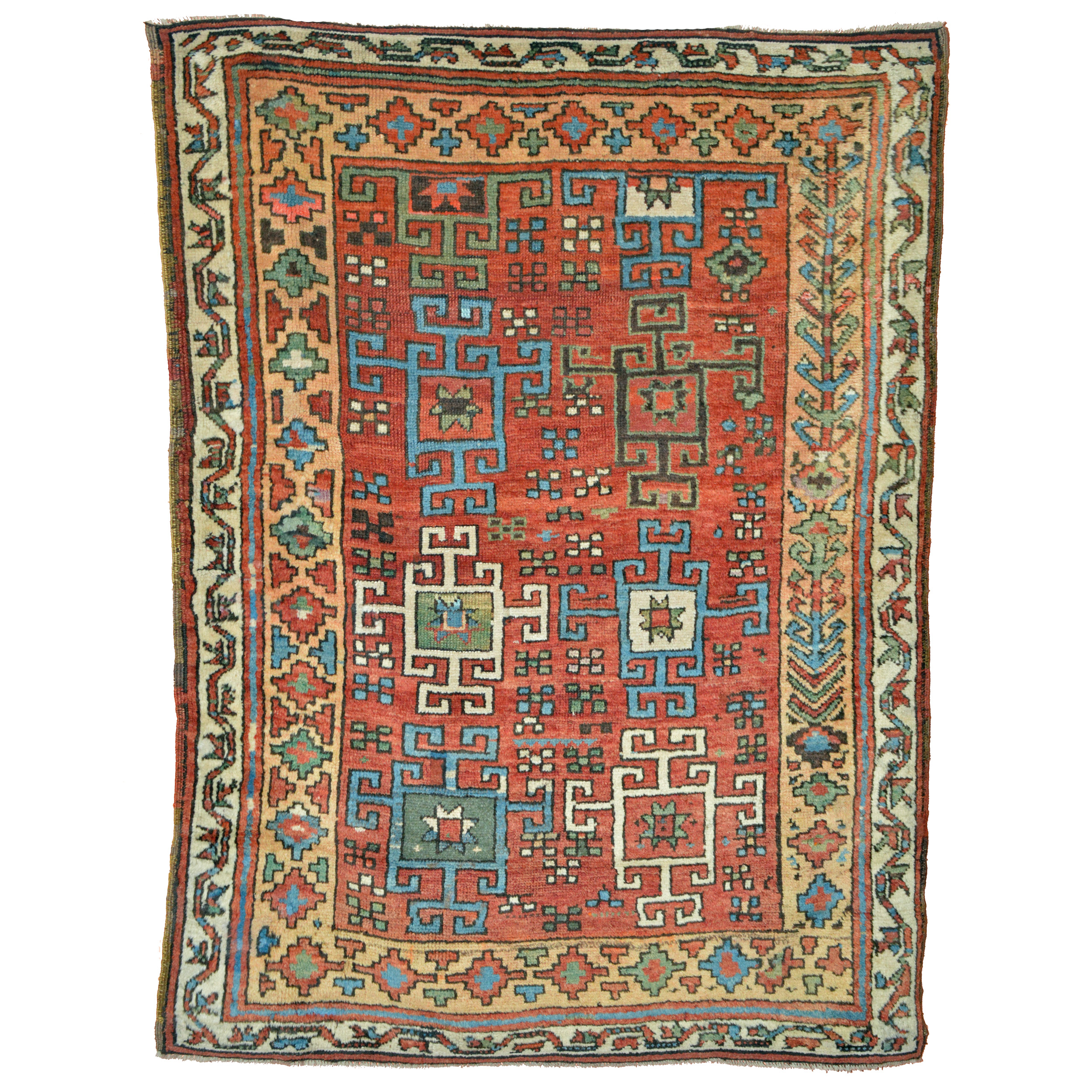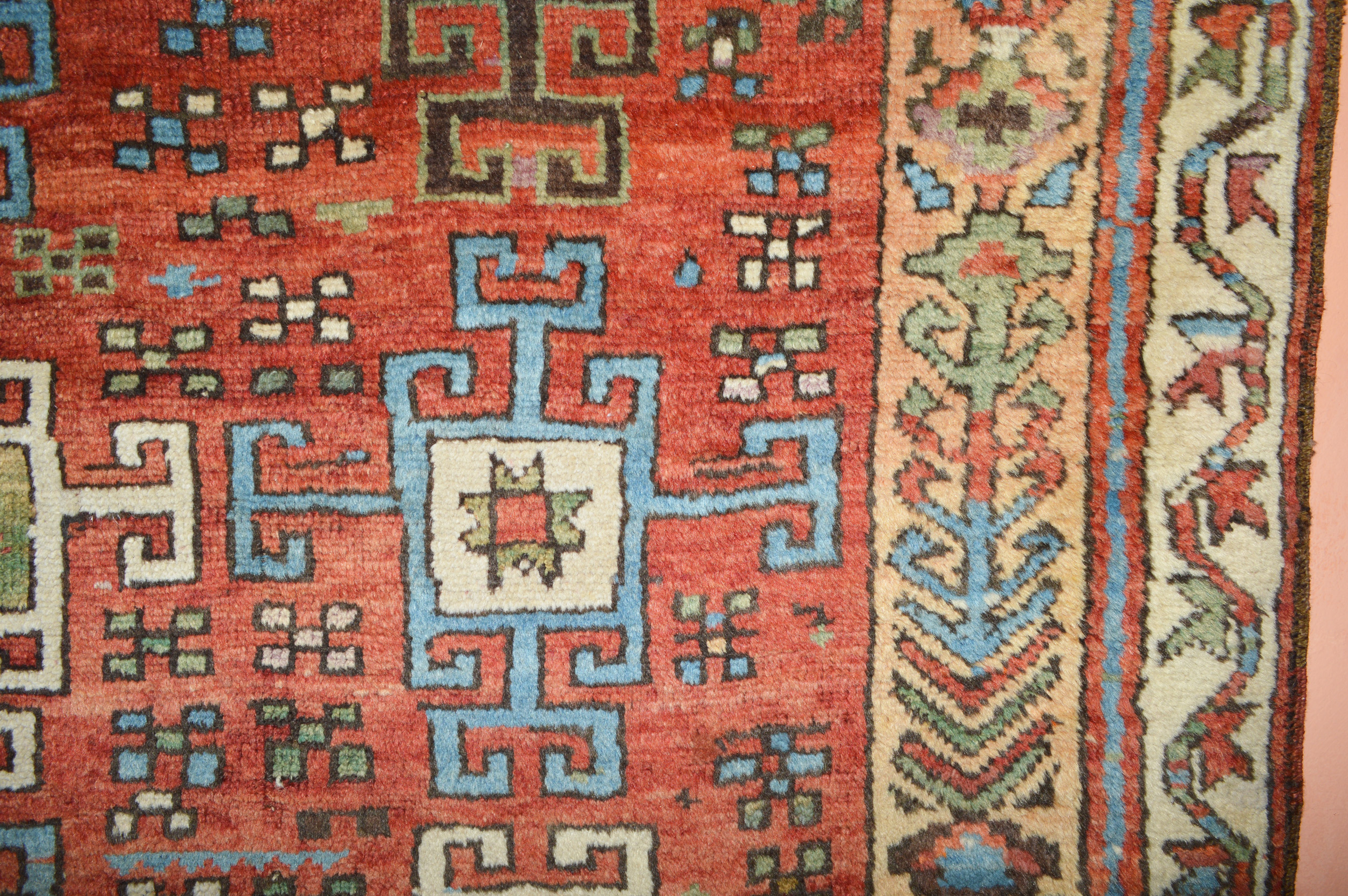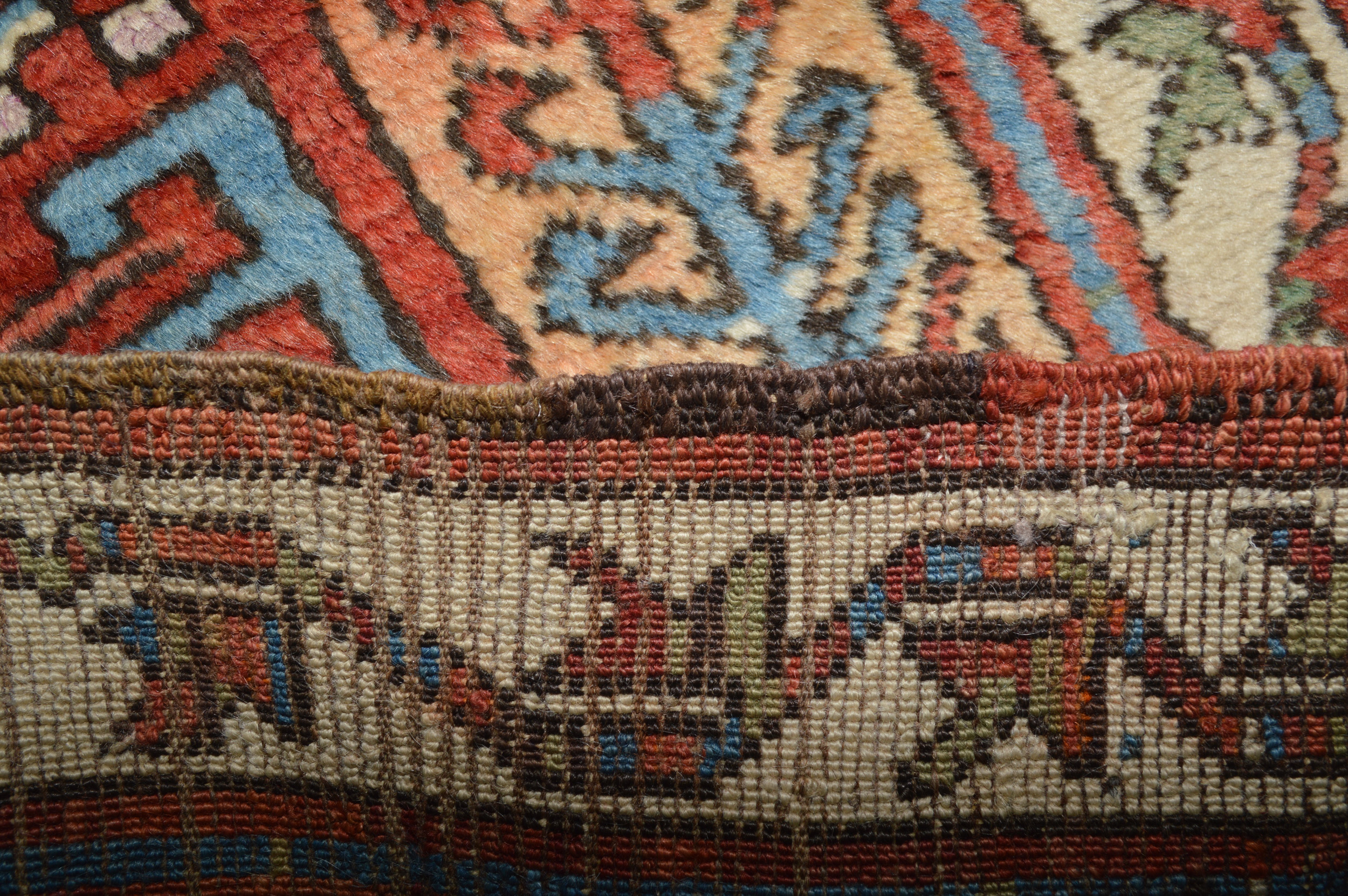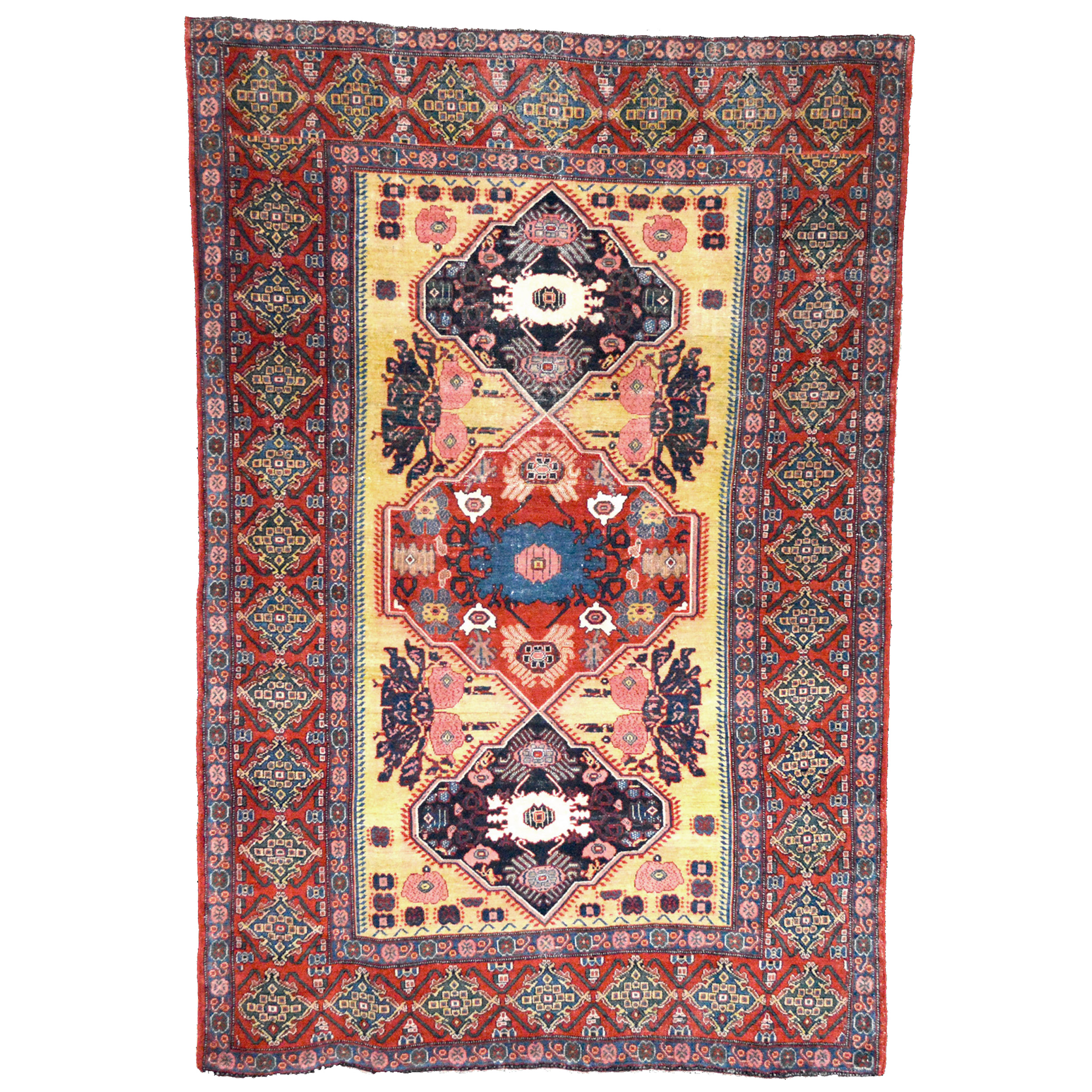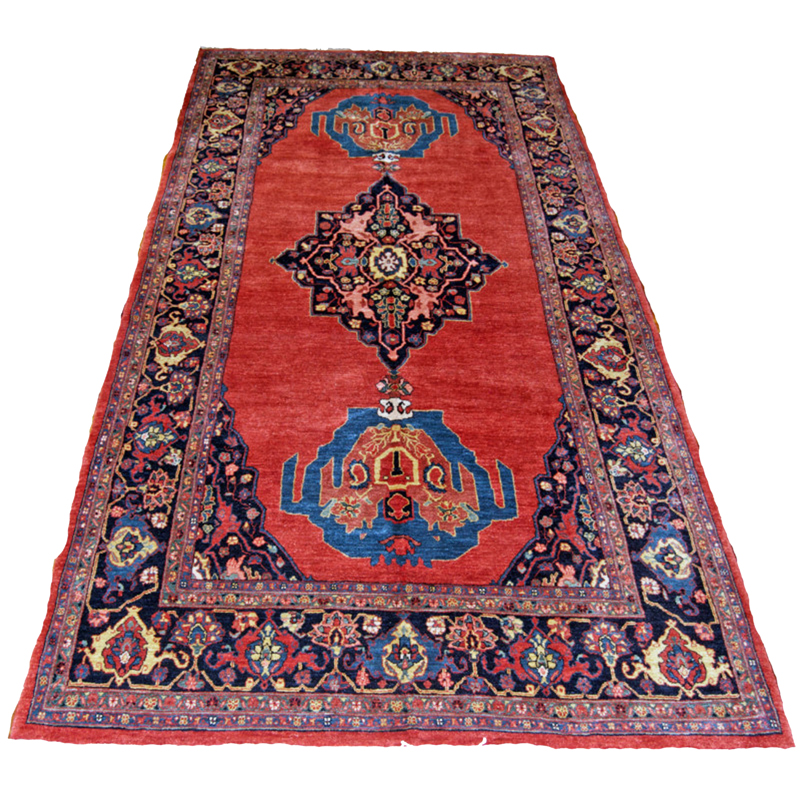4.5 x 6.3 Antique Turkish Konya Rug, Circa 1880
Antique Turkish rugs from the Konya region are prized for their subtle colors and geometric patterns. Generally not finely woven and often featuring long, fleecy pile, their warm but muted colors are very popular and suitable for a variety of interior design styles from traditional to modern.
The terra cotta color field is decorated with geometric forms, including beautiful sky blue and green tones. A light apricot color major border which has faded in color and an ivory outer guard border frame the field. This rug has what appears to be a “fuchsine” color: an early synthetic dye that starts out as a deeper purple and generally fades to a light lavender or tan on the face of a rug. Weavers generally stopped using this dye circa 1900 and its presence in rugs generally confirms that they date to the last quarter of the 19th century. Most of the dyes in this rug, which is typical of most 19th century rugs, appear to be natural. Synthetic dyes began to be used in Turkish rugs in the 1860s and in Persian rugs in the 1870s. So, contrary to popular understanding, the presence of one or more synthetic dyes does not mean a rug does not have very good age. Especially when used sparingly and if colors are pleasant, the limited use of synthetic dyes does not bother us much, on a subjective basis; though some other people feel differently about it. With some exceptions, I would generally prefer to see a pretty synthetic color than an ugly natural color. The overall balance of colors in this particular rug is harmonious and warm.
Areas of restoration.
To view detail photos, place cursor on image and use arrows.
Price: Please, call Helen or Douglas for price or other information. We will be happy to help you.
